Posted by Managementguru in Business Management, Organisational behaviour, Principles of Management, Strategy
on Mar 5th, 2014 | 0 comments
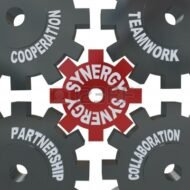
Synergy in Management Synergy: The interaction of two or more agents or forces so that their combined effect is greater than the sum of their individual effects. Synergy is the latest BUZZ WORD in the corporate business world. Synergy is the sum total of individual resources that which creates an enhanced effect greater than that of the sum total. Shall I simply say “1+1>2”! It is really amazing how much you can accomplish when it doesn’t matter who gets the credit. Teamwork divides the task and doubles the success. Unity is Strength: Synergy unites the people of an organization as a team and it serves like “BLINKERS FOR HORSES” to reach the goal of the firm without any conflicts amongst the team members. It is a managerial science and the role of top management in synergizing the employees plays a vital role in the success of the organization. As the old saying goes “Unity is Strength” and the new world aspires “Sky is the Limit”. By integrating the team members, having a smooth relationship with labor unions and management staff, a firm can achieve its overall objectives and mission in a very short span of time. Cordial Industrial Relation paves the way for the functioning of the firm without a hitch. Developing Systems for all core areas: The top management has to create “SYSTEMS” for all the core areas; Policies, procedures, rules and regulations, norms etc.,shall serve the common purpose of controlling and guiding all the employees of a firm creating a perfect ambience for efficient performance. The general managers should be the pillars of a firm who shoulder the responsibility of implementing these systems in an objective manner and not in a subjective manner. Scope: Synergy also has its scope outside the organization. The managers should be able to connect themselves with customers, banks, trade associations and also the government with ease. The weather of your firm depends on the psychology of your persona and the collective efforts of your team. If you want your firm to be SUCCESSFUL and UNIQUE, you have to POOL ALL YOUR RESOURCES, be it human, physical, financial or intangible. The competitiveness enjoyed by your firm to capture and win the market marks your strength; the limitations or restrictions that mar the growth of your firm can be overcome by the SYNERGISTIC BOOSTER that you administer into the minds of your employees. Integration is the key word that leads to DISTINCTIVE COMPETENCE, a strength that cannot be copied by other organizations which helps you to make your organization more productive and...

Posted by Managementguru in Business Management, Marketing, Principles of Management
on Mar 4th, 2014 | 0 comments
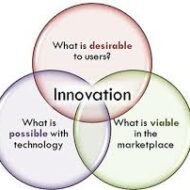
The Realm of Product Innovation A manufacturer or a service provider, who aspires to be successful in a business market, must indulge himself in research, pertaining to consumer preference as well as the various stages of a product life cycle. This will give him a better chance to make his future decisions concerning the product and also the wisdom to evolve strategies accordingly. Developing a product and introducing it into the market demands certain amount of forethought and prudence. The first step is to study the market, to understand consumer preference as well as to gauge whether your product will be appealing to the customers existing in that market. The prerequisite for this would be market segmentation, that is to statistically estimate the demographic quotient (people belonging to different age groups and ethnic societies) of the sample population and decide on the customers whom you want to target. A product’s success depends mainly on two things: 1) Innovation-lateral thinking, by which you let loose of all your unorthodox methods and stick onto some novel ideas of marketing. 2) Customer-oriented marketing rather than product oriented. This customer oriented concept is advocated by modern marketing consultants and it has proven to be a fantastic proposition. More than the actual product, people like to know more about the values that they obtain out of that product. The secret behind success will be to hit the right note, by propagating more about the value added services that go with the product. Expectations Created by the Product When a product is introduced in a market, say, automobiles for example, since every tom, dick and harry is fond of cars and bikes and they talk a lot about it. It is looked upon by prospective customers with great expectations, which might be due to the great hype created by the manufacturer through advertisements in electronic media, papers and magazines. The product as it hits the market will instantaneously make it big, if it has the right mix of intangible and augmented benefits that make customers happy and they feel that they have bought something worth the money paid for. A luxury car is well received by the market, irrespective of the price tag that is stuck to it, just because of the value added benefits such as, delicacy, great speed, high-performance, safety, insurance and warranty. Product Pre-Launch Analysis Before launching a product, industry analysis is a must, as various similar products might exist and it comes to the question of how different and appealing your product is, for market acceptance. Even minor things can make a big difference, say, for instance, if you are able to float the cheapest car, in terms of price but with great fuel efficiency, the results are obvious. The strategy would be to introduce innovations not only in your product but also in your thinking. Best products emerge as a result of tuning in your wavelength with that of the consumers’. Product Life Cycle A product gets introduced, grows, matures, stabilises and slowly withers off, just like a human being. No man is eternal and so is a product. You may argue that some products are in the limelight for more than their share of lifetime. If you keenly observe, that would have been the result of makeover changes to the product in lieu of the change in people’s liking and analysis of market trend. Some products have a second chance to prove their mettle. They go into hibernation for a while and then re-enter when market conditions seems to be favorable. The perspective from which you look at the life cycle of a product may cast a different idea...

Posted by Managementguru in Business Management, Principles of Management
on Mar 3rd, 2014 | 0 comments
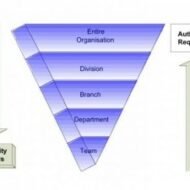
Centralization and De-Centralization Concepts CENTRALIZATION: The term “centralization” has several meanings: Centralization of Performance: Say, if the operations of a company is restricted to a single geographical location, it characterizes centralization of performance. Departmental Centralization: Specialized activities are carried out by a single department, say, maintenance of a whole plant, staff recruitment by HR department etc., Centralization as an aspect of management: This implies restricted delegation and exclusivity of decision-making by the top management. According to Allen, “Centralization is the systematic and consistent reservation of authority at central point in an organization.” According to Weihrich and Koontz, “Centralization (as an aspect of management) is the tendency to restrict delegation of decision-making. What are the special circumstances that force the managers to reserve authority and centralize decision making powers? 1. To facilitate personal leadership 2. To provide for integration 3. To handle emergencies 4. To utilize resources effectively and instantaneously. DECENTRALISATION: It is the tendency to disperse decision making authority in a structured and organized manner. It can be viewed as a philosophy rather than a principle where-in “discretion” plays a major role in deciding which decisions to push down into the organization structure and which to hold near the top. Capital expenditure, Investment analysis and major policy decisions have to be dealt with, by the top management. It is the systematic effort to delegate to the lowest levels of authority except that which can be exercised at central points. TYPES OF DECENTRALIZATION: Three approaches to the concept are: 1. PROFIT CENTRES 2. COST EXPENSE CENTRES 3. INVESTMENT CENTRES Profit Centre: Here the organization is split into divisions on a “product basis” and is given full authority to handle its own scheduled operations, right from placing orders to negotiating the sale of its finished products. Cost Expense Centre: Whenever it is easy to determine the cost of operations, cost centres are established. Cost centres run on “budgets” which acts as a control tool to run the units within the specified budgetary limits. Investment Centre: Useful in the case of big multi-product enterprises where product performance is measured by decentralizing the investment aspect. Each strategic business unit is responsible for the acquisition, use and disposition of fixed resources. Advantages of Decentralization: Managers and executives are relieved form excessive work pressure Even low level employees are involved in decision making thus bringing the decision making process closer to the scene of action. It facilitates product-diversification Creates an opportunity for learning Ensures effective control When a big organization is divided into relatively smaller units, it becomes flexible and also effects close control. Disadvantages of Decentralization: · Conflict arises between people belonging to different levels of the organization · Rising cost · Lack of co-ordination between production and marketing departments · No defined leadership Contingency Factors in Decentralizing: 1. Organizational goals 2. Organizational size 3. Geographical dispersion 4. Technical complexity of tasks 5. Time frame of discussions and decisions 6. Subordinates’ take on issues 7. Planning and control procedures 8. Environmental factors 9. Knowledge and experience of managers Effective Decentralization can be accomplished by · Establishing appropriate centralization · Developing efficient managers · Proper provision for communication and co-ordination · Establishing adequate controls Top management must be willing to delegate authority towards decision making; Middle management must be willing to accept responsibility that is being delegated. Only then effective decentralization is...

Posted by Managementguru in Business Management, Principles of Management, Training & Development
on Mar 2nd, 2014 | 0 comments
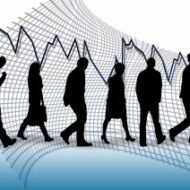
MAN POWER PLANNING What is the meaning of man power development? This involves an accurate determination of the present and future man power needs of the enterprise. Also the assessment of the right kind of organization structure both present and projected which determines the number and kinds of managers and workers required, is called for. ELEMENTS OF MAN POWER PLANNING: 1. Present Man Power Position Analysis: An assessment and evaluation of present man power position is the first step in the process which involves data collection pertaining to name, age, educational qualification, training experience, specialized skills of the employees. This is done with the help of a man power inventory chart. 2. Man Power Inventory Chart: a) An overview of the present staffing situation of the company is known b) Prospective persons for promotion can be identified c) Future internal supply of human resource can be found out d) Lack of performance is pin pointed and either people can be replaced or trained suitably e) People on the verge of retirement are identified and plans are made to recruit suitable people to replace them f) People whose promotion is overdue but not implemented due to internal politics can be identified and justice can be done by the management. Pic Courtesy: SuccessFactors 3. Job Evaluation and Job Analysis: Job evaluation is a process to rate a job in the order of hierarchy and laying down specifications needed to carry out that job. This would high light the following information a) The nature of work done by the work force b) The method employed by them to do it c) The skills, education and training required to do it d) How a particular job is related to other jobs e) What are the physical environmental conditions to accomplish the task effectively After careful analysis a neat job description can be prepared for each job which would cover the following details. 4. Job Description: a) Name or title of the job b) Nature of duties and operations to be performed c) Authority, responsibilities and accountability d) Necessary qualification i.e., education, skills, training, experience etc. Pic Courtesy: Indiamart 5. Assessment of Long term and Short term Goals: The goals whether short term or long term is decided by the market demand, and sales forecasts. Determining these goals gives the company a clear picture as to where it is headed for in the future and the kind of man power requirement to satisfy the enterprise objectives. 6. Demand of Supply of Personnel: The demand for Labor is very high as we all know and it is inevitable for the organization to keep track in terms of man power inventory and requirement of present and future. You cannot hire any X, Y OR Z for a particular job. Inter departmental transfers can provide a temporary solution if a void is created for a specific position but it will not work out in the long run. “The ultimate objective of man power planning is to fill the demand and supply...

Posted by Managementguru in Business Management, Organisational behaviour, Principles of Management
on Mar 2nd, 2014 | 0 comments
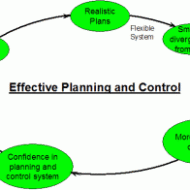
Principles of Planning and Forecasting The guidelines of principles of planning are as follows: 1. Principle of primacy of planning: As discussed earlier planning is the prime function of management and precedes all the other functions. 2. Principle of verifiable objectives: The objectives set must be clear, achievable and verifiable in order to attain a feasible management model. 3. Principle of planning premises: The contributing factors in the external environment are government policies, economic factors, market standing, and consumer preferences etc. that decide the success of planning. Planning is done based on these assumptions but nevertheless, all the factors external to the business have to be thoroughly analyzed to ensure concrete planning. 4. Principle of limiting factor: Cost is one of the major limiting factor; production cost has to be factorized to ensure economy of scale and potential resources needed for a business in the likes of men, material and other physical resources have to be taken into consideration. 5. The commitment principle: Planning and decisions whether short term or long term is valid only for a particular period. The long term plan is nothing but the future impact of today’s decisions. Decisions concerning new product development by a company aims at creating an impact for the next 15 years or so while decisions concerning sales target has to be accomplished on a periodic basis- monthly or quarterly. 6. Principle of flexibility: A plan should be flexible and give room for contingencies like losses incurred through unexpected events. 7. Principle of navigational change: Plans while suggested to have built-in flexibility are also subjected to periodical review in the light of environmental fluctuations. A business can not stick to a long term plan devised originally since it is equally important to check on events and expectations periodically. FORECASTING AND PLANNING: Forecasting is a management technique that relies on both past experiences and present assumptions to predict the future. Again this serves as an important premise for the planning process. The conditions of the external environment though out of one’s control, if properly estimated, can lead an organization to produce wonderful results. TYPES OF FORECSATS: Economic forecast: To gauge the general economic scenario and its effect on sales. Technological forecast: To predict what new technologies can be developed, when and how to bring feasibility to the operations involved. Competition forecast: To look into the competitor strength and tactics and know where one stands. Social forecast: To predict the attitude of people and social conditions. Supplier’s forecast: Reveals the response of suppliers. FORECASTING TECHNIQUES: 1. Quantitative time series analysis: Monthly sales data is plotted in a chart and the past data helps in consolidating the sales volume and fluctuations in sales. Sales trend is determined and the assumption is that, the future will reflect the past and present trend and hence can be projected. If there is a lull in sales, reasons for the decline can be known by taking feedback from various quarters like, suppliers, consumers and employees. 2. Derived forecast: The forecast done for a specific purpose may be reused for another purpose. For example a census data can help you to determine the demography of a particular geographical area that might help you to reach your target customers. 3. Casual methods: If the underlying cause for the variable can be determined, the forecast can be arrived mathematically and produce quite accurate results. Social media marketing is very popular now a days and instantly you know how many hits are received for a particular product and the ratio of conversion into sales. 4. Brain storming: People with knowledge and expertise assemble in order to discuss the pros and cons of a particular idea, be it the launch of a new product, product promotion or withdrawal of a product line. 5. Delphi method: In this method, each and very expert is contacted independently and opinions are drawn...










